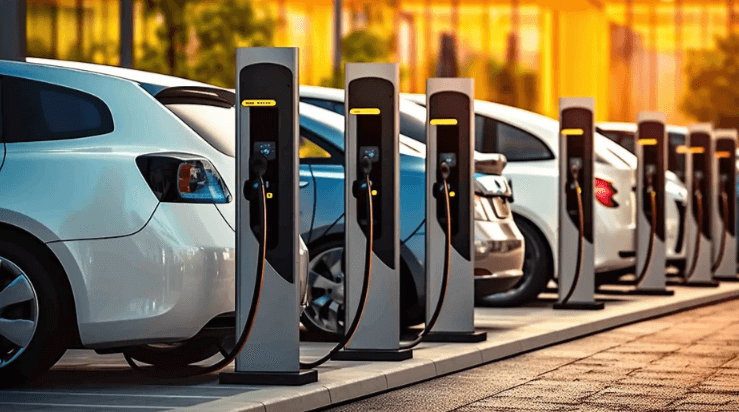What are the emerging trends in the electric vehicle market in the USA?

Introduction
The electric vehicle (EV) market in the USA is undergoing significant transformation. As technology evolves, so do consumer preferences and government policies, all contributing to the dynamic landscape of the EV industry. This article delves into the emerging trends shaping the future of electric vehicles in the USA, providing insights into technological innovations, market growth, and policy impacts.
Increased Adoption of Electric Vehicles
The adoption rate of electric vehicles in the USA is on the rise, driven by increased awareness of environmental issues and advancements in EV technology. As battery costs decrease and charging infrastructure expands, more consumers are considering EVs as a viable alternative to traditional gasoline-powered vehicles. The growth in EV sales is also fueled by incentives and rebates offered by federal and state governments, making EVs more affordable for a broader audience.
Expansion of Charging Infrastructure
A robust and widespread charging infrastructure is crucial for the growth of the EV market. In the USA, there has been significant investment in expanding public and private charging stations. Companies like Tesla, ChargePoint, and Electrify America are leading the charge, installing fast-charging stations across highways and urban areas. This expansion is essential to alleviate range anxiety and encourage more consumers to switch to electric vehicles.
Advances in Battery Technology
Battery technology is at the heart of the EV revolution. Recent advancements have led to longer-lasting, more efficient, and cost-effective batteries. Innovations such as solid-state batteries promise to enhance energy density and reduce charging times, making EVs even more appealing to consumers. These technological improvements are crucial for increasing the range of EVs and lowering their overall cost, which is a significant factor in consumer adoption.
Government Policies and Incentives
Government policies play a pivotal role in shaping the EV market. In the USA, both federal and state governments have introduced various incentives to promote the adoption of electric vehicles. These include tax credits, rebates, and grants for both consumers and manufacturers. Additionally, stringent emission regulations are pushing automakers to accelerate the development and production of electric vehicles.
Rise of Electric SUVs and Trucks
The EV market is no longer limited to small cars and sedans. There is a growing trend towards electric SUVs and trucks, catering to the American preference for larger vehicles. Companies like Tesla with its Cybertruck, Rivian with its R1T, and Ford with its F-150 Lightning are leading this segment. The introduction of these vehicles is expected to attract a new demographic of consumers who require more space and power but also want to reduce their carbon footprint.
Integration of Autonomous Driving Features
Autonomous driving technology is increasingly being integrated into electric vehicles. Companies like Tesla, Waymo, and GM’s Cruise are at the forefront of developing self-driving EVs. The combination of electric powertrains with autonomous features is set to revolutionize the transportation industry, offering safer, more efficient, and convenient travel options.
Growing Interest in Fleet Electrification
Businesses are increasingly looking to electrify their vehicle fleets to reduce operational costs and meet sustainability goals. Major logistics and delivery companies, such as Amazon and UPS, are investing in electric vans and trucks. Fleet electrification is expected to have a significant impact on the EV market, driving demand for commercial electric vehicles and supporting the development of charging infrastructure.
Consumer Awareness and Education
Consumer awareness and education about the benefits of electric vehicles are crucial for market growth. Organizations and automakers are investing in campaigns to inform the public about the advantages of EVs, including lower maintenance costs, environmental benefits, and advancements in technology. Increased awareness is expected to drive more consumers towards considering EVs for their next vehicle purchase.
Impact of COVID-19 on the EV Market
The COVID-19 pandemic has had both positive and negative impacts on the EV market. While initial lockdowns and economic uncertainties led to a decline in vehicle sales, the subsequent recovery phase saw a renewed interest in EVs. The pandemic highlighted the importance of sustainable practices and cleaner transportation, encouraging more consumers and governments to support the transition to electric mobility.

Collaborations and Partnerships in the Industry
Collaborations and partnerships among automakers, technology companies, and governments are essential for the growth of the EV market. These partnerships facilitate the sharing of resources, technology, and expertise, accelerating the development and deployment of electric vehicles. Joint ventures like the one between Ford and Volkswagen aim to leverage each company’s strengths to produce more efficient and affordable EVs.
Advancements in EV Design and Aesthetics
Modern electric vehicles are not only efficient but also stylish and futuristic. Automakers are focusing on innovative designs to attract a broader audience. Sleek, aerodynamic designs, coupled with advanced technology features, make EVs appealing to tech-savvy and environmentally conscious consumers. The emphasis on aesthetics is helping to change the perception of EVs as practical yet desirable vehicles.
Challenges in the Supply Chain
The EV market faces several challenges, particularly in the supply chain. The availability of critical materials like lithium, cobalt, and nickel is essential for battery production. Supply chain disruptions, geopolitical tensions, and the environmental impact of mining these materials pose significant challenges. Companies are exploring alternative materials and recycling methods to address these issues and ensure a steady supply of batteries.
Increased Investment in R&D
Research and development are crucial for the advancement of electric vehicle technology. Automakers and tech companies are investing heavily in R&D to improve battery performance, develop new materials, and enhance autonomous driving features. Government grants and subsidies also support these efforts, driving innovation in the EV sector.
Market Competition and Innovation
The growing demand for electric vehicles has led to increased competition among automakers. New entrants like Rivian and Lucid Motors are challenging established players like Tesla, GM, and Ford. This competition is driving innovation, leading to better products and more choices for consumers. The push for differentiation is resulting in advancements in performance, range, and features of electric vehicles.
Emergence of Second-Life Battery Applications
As the number of electric vehicles on the road increases, so does the number of used batteries. Second-life applications for EV batteries are emerging as a sustainable solution. These batteries can be repurposed for energy storage systems, providing backup power for homes and businesses. This trend not only addresses the issue of battery waste but also supports the growth of renewable energy solutions.







